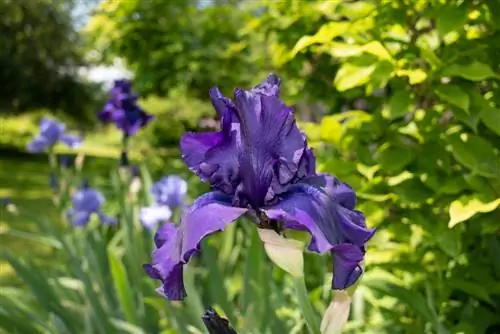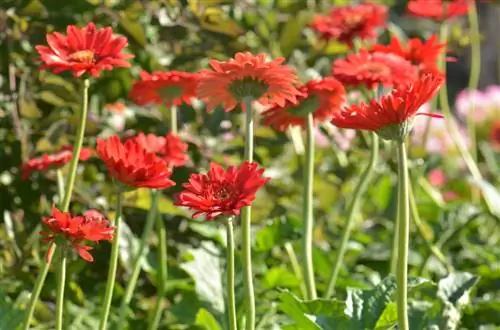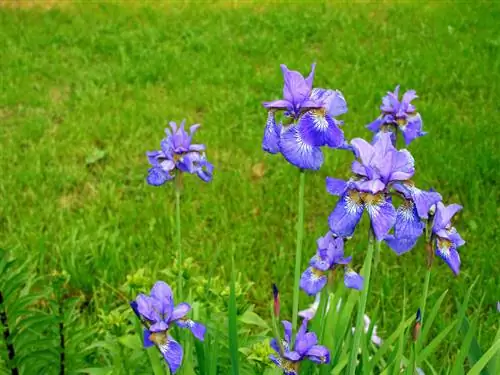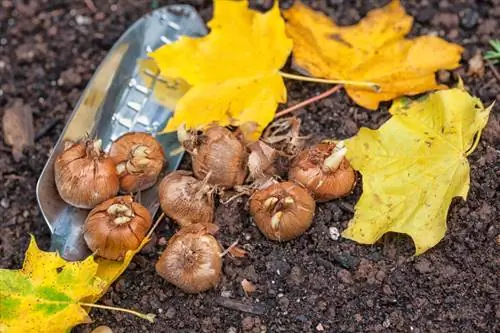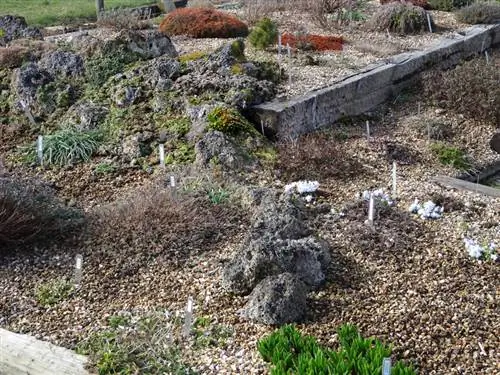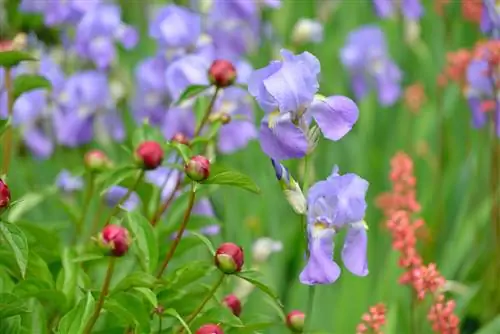- Author admin [email protected].
- Public 2023-12-16 16:46.
- Last modified 2025-01-23 11:21.
There are now numerous varieties of bearded irises in different heights and with very varied flower colors in well-stocked plant shops. If a few basic aspects are taken into account when caring for these plants, the perennials can ensure an abundance of flowers in the garden for many years.
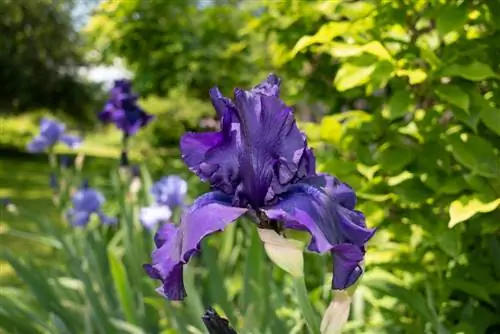
How to plant and care for a bearded iris?
The bearded iris is planted as a rhizome and prefers full sun locations. It should be planted after flowering and tolerates most types of substrate. The ideal planting distance is at least 25 cm. Propagation is possible by dividing the rhizome.
In what form is the bearded iris planted in the garden?
The bearded iris is usually transplanted as a root or rhizome. As soon as this piece of root has been planted in the ground in a suitable location, new leaves and later flowers will form from it.
Which location is suitable for a bearded iris?
Almost all bearded iris varieties are true sun worshipers. The large-flowered cultivars in particular love full sun locations and should be “refueled” by direct sunlight for at least 6 hours on sunny days. Make sure that your bearded iris does not have to compete with overgrown plant species in the perennial bed.
What should you consider when planting bearded irises?
The rhizome of a bearded iris should be planted as soon as possible after flowering (in mid-summer for most varieties). This gives the roots enough time to grow sufficiently in the location and to collect the necessary energy for flowering in the following year. The planting hole should be dug large enough and provided with a drainage layer to prevent waterlogging and with some ripe compost as long-term fertilization. The rhizome itself should then be buried as flat as possible, just below the surface of the soil, as the bearded iris allows its roots to grow relatively flat near the surface.
Can a bearded iris be transplanted easily?
Replanting bearded irises is possible without any problems immediately after flowering. However, you should note the following points:
- digging carefully with a spade
- shorten the roots a little
- shorten the foliage
- deeply loosen the soil at the new location
- water thoroughly after planting
How can the bearded iris be propagated?
To propagate the plants, simply separate parts of the rhizome with a spade and replant them in a suitable location.
Which planting time is ideal for planting bearded irises?
The optimal time to plant is directly after flowering (the timing depends on the respective variety), but if necessary the rhizomes can also be planted in March.
When does the bearded iris bloom?
Some varieties of bearded iris bloom in February alongside other early bloomers such as crocus, while others only bloom in July. The general rule of thumb is that lower bearded iris varieties bloom earlier than taller growing specimens.
Which substrate does the bearded iris prefer?
Whether it is the relatively dry soil in a rock garden or moderately moist soil: the bearded iris usually copes quite well with most types of substrate in the perennial bed.
Which planting distance should you keep for bearded irises?
If the bearded iris rhizomes are newly planted in a perennial bed, a distance of at least 25 cm should be maintained between the individual planting holes.
Tip
If the bearded iris becomes lazy to bloom after a few years in one location, the rhizomes should be dug up, divided and transplanted.

